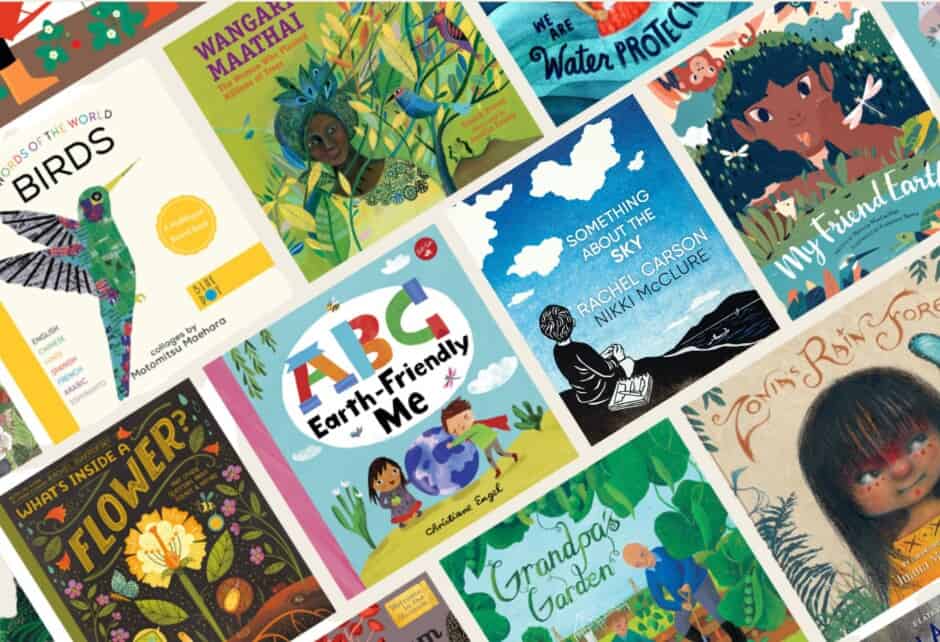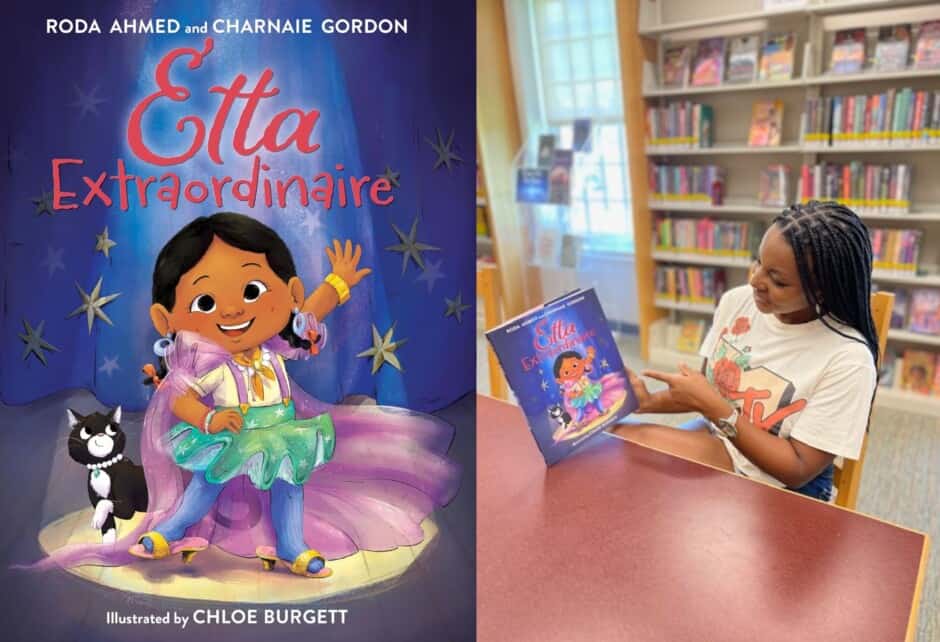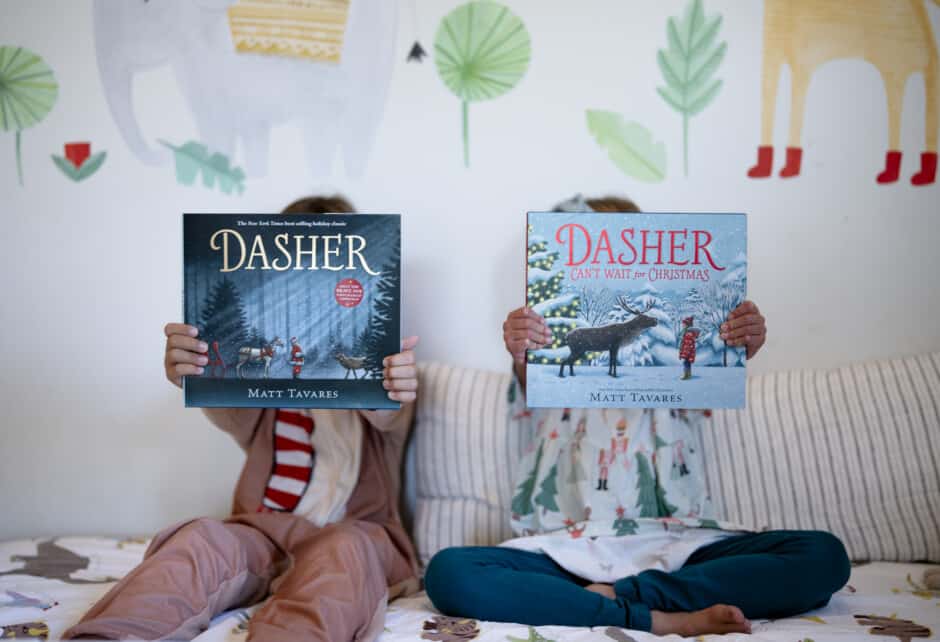
10 Tips for Raising Book Lovers & Active Readers
Written by Sara Langer
Photography by Georgie Greville, photographed by Nicki Sebastian
Building literacy skills in young children starts as early as birth and the importance of building language from zero to 3-years-old has been highly documented and researched. A strong foundation in literacy is an important part of becoming an “active reader,” when reading to truly understand and learn is the goal. Cultivating a love for reading and the skills to think critically about a text will serve children for the rest of their lives. Perhaps not surprisingly, research has found that, generally, the more students read for fun on their own time, the higher their overall academic success.
In order to learn more about ways we can support our children in their reading journey, we spoke with Andrea Hess, a Bay Area-based literacy consultant and founder of Balanced Literacy Consulting. Hess has over 22 years of experience in education, working as an elementary school teacher, principal, curriculum designer, literacy coach, and educational consultant. “We really start to see children falling behind in their reading level more significantly around 3rd grade and parent involvement at school and home is really important in a student’s success,” she says.
Hess explains that it’s crucial to develop early literacy skills in the first few years of life through exposure to a variety of books, songs, and experiences, but parents need to be a bit more explicit and intentional with reading at home as children get older. Below, Hess shares her advice on how parents can cultivate the skills and habits needed to help children become book lovers and active readers.
Model reading at home.
Hess says one of the best ways to instill a love of reading from a young age is when parents can model reading at home. She is partial to reading and holding a real book in her hands, versus reading on a device or screen, and she recommends parents with young children do the same. If you keep a book in your bag or your car, you will always have something you can pick up and read instead of mindlessly scrolling on your phone whenever you have a few minutes.
Read together for at least 20 minutes a day.
“You should aim to read at least 20 minutes a day at home. Children’s lives can be so over-scheduled these days. It is really important that they have a chance to slow down and there are daily opportunities for unstructured time to read and play,” she says. Those 20 minutes can be so valuable for both children and parents. Having the time to sit one-on-one and share a story together provides special bonding time.
Choose books related to their interests.
When children can relate to the characters and experiences in the books they are reading it is easier for them to comprehend and make connections. “Taking regular trips to the library is a great routine to get into with your children,” says Hess. “Every couple of weeks you can bring a new rotation of books into your home and children can choose books on their own, based on their interests.” When child are given choice and can independently decide what books they are reading, their desire to read will be stronger and their ability to understand and internalize the stories and lessons will come more easily.
Continue reading aloud, even with independent readers.
Reading books aloud, even when children are reading on their own, has many benefits. Reading aloud can help develop vocabulary, improves comprehension, and provides quality bonding time. Parents can stop at key moments in a story to ask questions and encourage discussion. Research shows that continuing to read aloud after the age of five and beyond improves reading and listening skills and academic performance.
Make sure kids are choosing books at their level.
Once your child is an independent reader, Hess urges parents to make sure they know their child’s specific reading level and that they are selecting books for that level. “When children choose books that are either too far below or above their actual reading level, they are not able to improve their reading skills and may have difficulty with comprehension,” she explains. Hess recommends speaking with your children’s teachers to determine their level and then using the Scholastic Book Wizard to find books that are the appropriate level and in line with their personal interests.
Replace family movie nights with reading nights.
As Hess suggests, modeling reading at home is important if you want your kids to become book lovers themselves. She recommends one way you can make it a special event that the whole family does together is to have a “Family Reading Night.” Make it fun by preparing special snacks and creating a cozy place to sit together. You can each read your own book or you can read aloud to your children.
Ask questions for comprehension and further discussion.
Hess encourages parents to go a step further than simply reading aloud. “When reading aloud, take the time to stop and ask questions. Asking questions will help check for understanding and it will model how children can begin to think and ask questions themselves,” she says. “Try to choose questions that are open ended. Encourage discussion and help them relate the text back to their own life.”
Reading and writing skills are directly related to one another.
Hess’ work in literacy coaching and consulting has focused on the Reading and Writing Workshop model, where reading and writing are taught together through explicit instruction using authentic texts. “Reading and writing skills are directly related to one another,” she explains. “Children who are good readers are more likely to be good writers and vice versa.” Keeping a journal at home is a great way to encourage writing. Beginning writers can use “estimated spelling” in their notebook. To help develop phonemic awareness skills, parents are encouraged not to spell words out for their children, but help them by stretching the word like a rubber band to hear all of the distinct sounds and then take their best guess. Young children who aren’t writing yet can work on drawing or scribbling. Putting pencil to paper, even if children are not forming letters, words, or sentences, will help develop early writing skills.
Don’t save reading for right before bed
Reading a book right before bed is a common practice for many families with young children, but Hess suggests also trying to read together earlier in the day or evening. “Right before kids go to sleep they are the most tired and it’s not the best time for active reading. Try to read earlier in the day, either after school or right after dinner,” she says. Reading a book right before going to bed is a nice way to ease into sleep so you don’t need to cut it out, but try to get some reading in during the day when your children’s minds are fresher as well. Anything done in addition to the 20 minutes of recommended daily reading is only going to help, not hurt.
For a slew of solid book suggestions, check out our roundups on 25 Children’s Books That Inspire Empathy, 16 Great Sex Ed Books For Kids, Tweens, and Teens, 18 Great Kids Books About Gender, 10 Books For Your Mini Francophile, 20+ Feminist Books For Kids, Kids Books That Encourage Healthy Eating, and The Most Beautiful Childrens Books To Give (Or Receive) As Gifts.
Share this story




